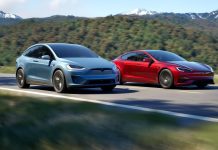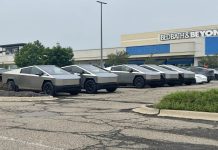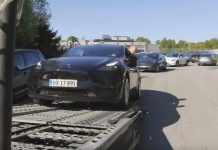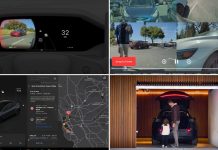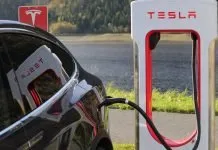There has been a lot of talk regarding Tesla’s battery technology, with most of the future of electric vehicles banking on the progress made in the battery sector. Tesla has always impressed the industry when it comes to vehicular range, and the prime example being the Model S, which has undergone a massive improvement in terms of the single-charge range that it offers its customers. But single-charge range is not the only factor that dictates the talk, as the battery life of a Li-ion cell has always been questioned by the experts. Tesla has had a research team working on their battery tech for the past three years almost, and now they have come up with positive results – batteries lasting upto 2 million miles in the future.
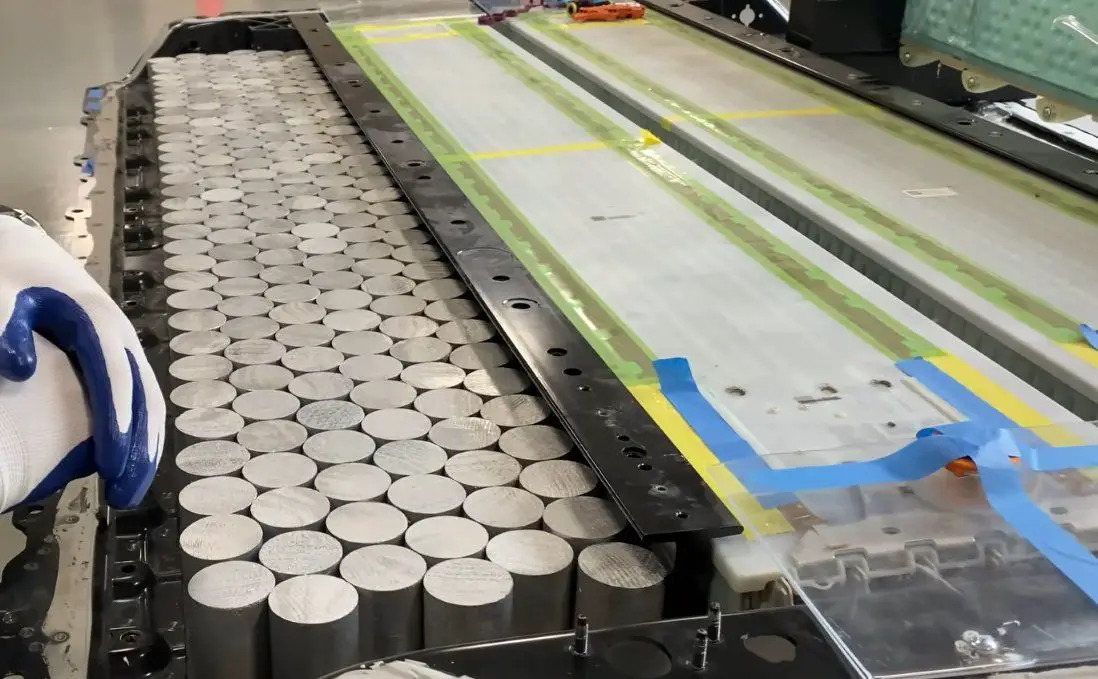
New Tesla Research Reveals 2 Million-Mile Battery
The battery talk has been in the spotlight for the last two months specifically, and that is mainly because of Tesla’s Battery Day event, that took place on 22nd September. Tesla did disappoint many by not focusing on ‘the battery’ that day, as other things like affordability and sustainability were discussed. That being said, they did come up with a new cell, the 4680, which would be the cornerstone of Tesla’s immediate future. Now, with a new cell coming up, you would expect battery life to be discussed, and this announcement will definitely interest the EV enthusiasts.
The Million-Mile Battery
The million-mile battery has been talked about a lot in the past few months, after the amount of R&D that is going on in this sector. While Tesla has remained mum about this particular topic, Jeff Dahn yesterday stated that the newest test results point towards the possibility of future batteries lasting not one, but two million miles (3.218 million kms).
Jeff Dahn is the head of the battery technology research team for Tesla for the past three years. Based in Canada, this team has been working hard to bring a better generation of batteries to the world. A couple of months ago, they published a paper wherein Dahn stated that the future of the Li-ion batteries isn’t the solid-state batteries as many were expecting. Instead, Li-ion cells with a liquid electrolyte will continue to rule the roost, according to the team.
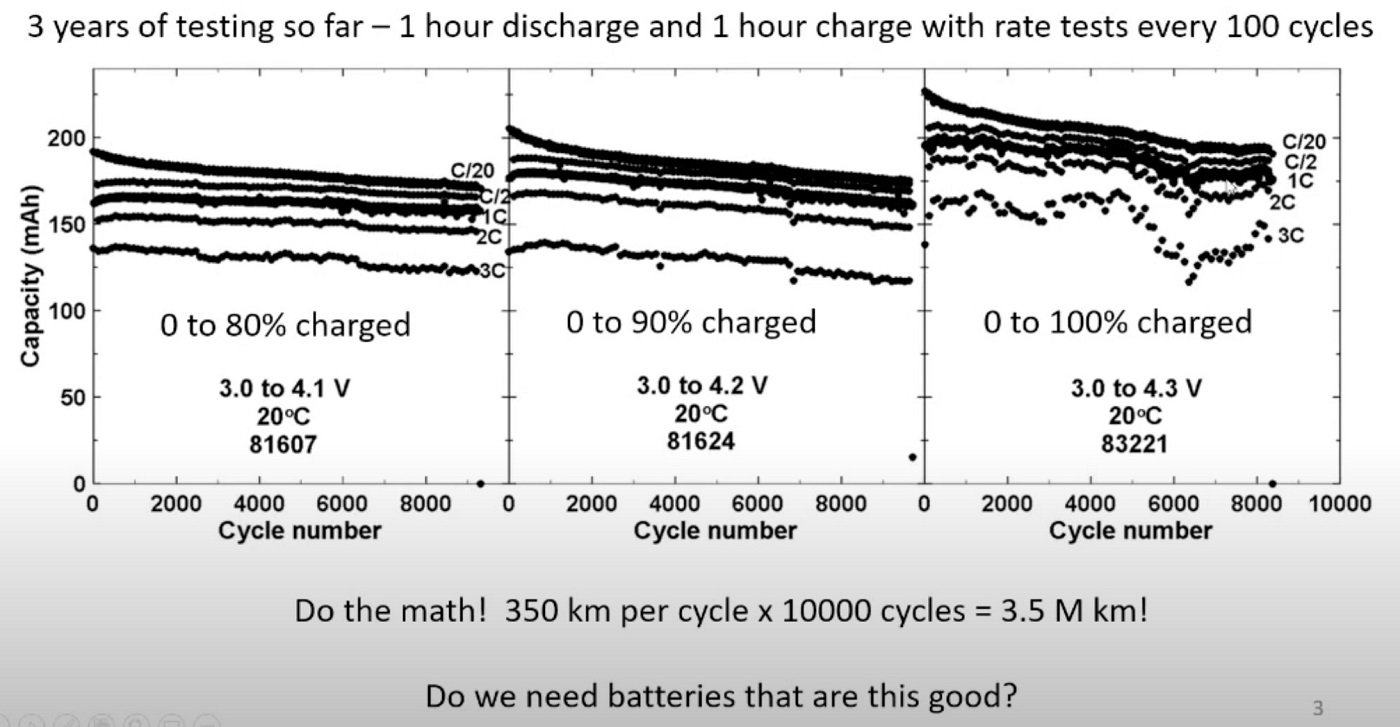
Now, in a new presentation, Dahn discussed the updated results from their tests, and the new battery tech that Tesla is developing is something that he hopes will be the new standard in the industry. The new results show a battery showing no significant degradation even after 10,000 charging cycles. At 350 km per cycle, that puts the total at 3.5 million km, well over 2 million miles. The presentation also included the fact that lithium-ion cells do better under conditions where they are not charged and discharged 100%. So basically, if the battery does not reach either extreme of its capacity, it can last much longer, making it perfect for an electric vehicle. No EV owner waits till his car is at 0% to charge it up, and in these days of shorter charging stops, many of them unplug their car by the time it is at 80%, which makes sense.
If the battery discharge is between 25% and 50% of the total battery capacity, then the battery shows almost zero degradation. Now, if you bring in some mathematics, the lowest single-charge range that a Tesla offers is 263 miles (423 km) in the Model 3 Standard Range Plus. On an average, an American driver uses his/her vehicle for around 30 miles (48 km) a day. It clearly shows that the 25% to 50% discharge figure can be achieved very easily. But, this begs a fresh question – do we actually need batteries which are that good?
This is a perfectly good question. Is spending all that money on battery technology worth it, when Tesla could also pour it into building a cheaper car and make an electric vehicle that is actually affordable for everybody? Dahn answers this too, as Tesla plans on adding some new features to this current vehicle fleet, and the most prominent of those is vehicle-to-grid charging.
With super-long lasting batteries inside their cars, and very few of them actually undergoing heavy usage, Tesla can now start working on the vehicle-to-grid charging feature that they have talked about in the past. Simply put, while your car is parked in your garage or office parking lot, it is undergoing charge-discharge cycles. What if you were able to connect your car to the grid, and let the car charge the grid instead of the other way around? By doing this, grid storage increases and you can earn some money on the side by just having your car still idly.
Few other applications of these long-lasting batteries can be put to use after the car has completed its life, as the battery will most definitely outlast your car. Ferries and hybrid aircraft can also make use of these long-lasting batteries, as they have a much higher amount of charging cycles per day.
Tesla had been leading the case on the vehicular range chart for quite some time now, but there are some new competitors in the market now. Yes, Tesla does offer a lot more features and charging options, but the 420-mile Model S Plaid is still a couple of years away, which has made the competition with companies like Lucid Motors tougher. That being said, a two-million-mile battery is definitely going to spark some interest in the minds of the new customers. Tesla keeps coming up with newer technology, and with cooler features like the vehicle-to-grid on the radar, the curve will remain upward for them.

